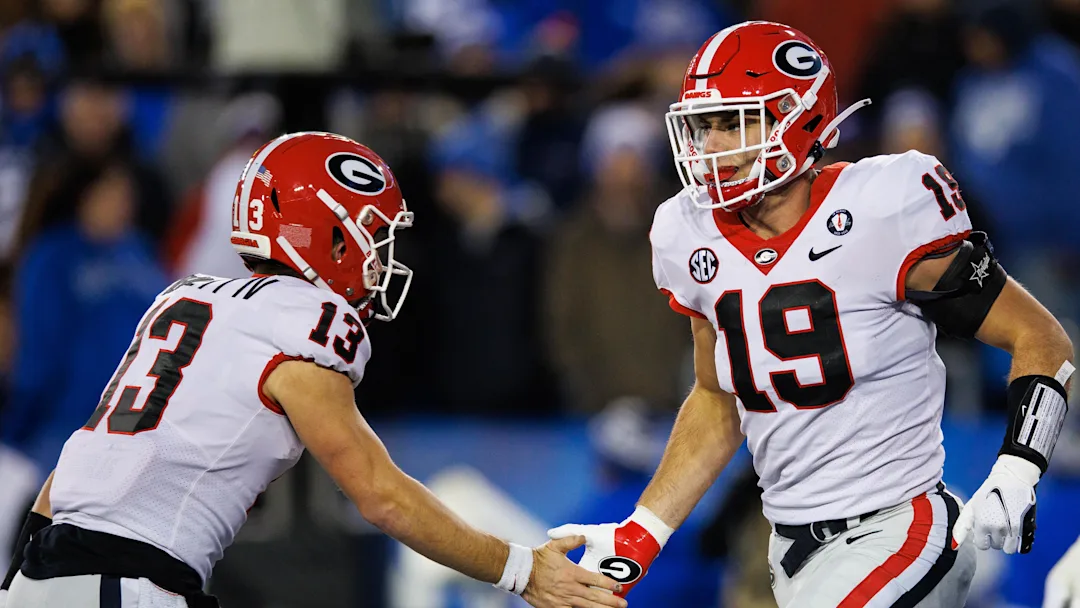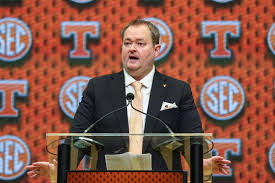In the heart of Athens, Georgia, where football is not just a sport but a way of life, fans are rallying around a growing movement—one that calls for an immortalization of one of the most beloved and impactful Bulldogs to ever wear the red and black. The voices are getting louder, the arguments more passionate, and the calls for action increasingly unified. Georgia Bulldog fans want a statue. Not just any statue, but one to honor a player who, in their eyes, transcended the game, embodied the spirit of the program, and helped turn Georgia into the powerhouse it is today.
It’s not just about touchdowns, tackles, or trophies. It’s about legacy.
The former player at the center of this movement is more than just a highlight-reel hero or a name in the record books. To the Georgia faithful, he represents a standard of excellence, resilience, and pride. His impact on the program wasn’t limited to the box score—he helped shape the very identity of Georgia football in the modern era. For many, he is the cornerstone of one of the most important chapters in Bulldogs history.
Over the years, Georgia has produced its fair share of legends. Herschel Walker, David Pollack, Matthew Stafford, A.J. Green, and more recently, Stetson Bennett—all have left indelible marks on the program. But while some of these names already receive prominent recognition, others, like the former player currently being championed for statue status, remain underappreciated in a physical sense. It’s not that fans have forgotten him—far from it. It’s that the time has come, they argue, to give him the tribute he deserves.
Social media has become the epicenter of this grassroots campaign. Posts, petitions, and photoshopped statue mockups flood timelines during the offseason. Former teammates have chimed in, offering their support and sharing stories that only add to the mystique. One said, “He changed the culture. That’s not something you can measure in stats. That’s something you feel in every practice, every meeting, every game. He made everyone around him better.”
Another coach, now with a different program, recalled, “He was the emotional heartbeat of the team. We always talk about ‘do your job’—he did that and then some. He led with his voice and with his actions. You can’t teach that. It’s rare. And it’s deserving of a permanent place outside Sanford Stadium.”
Indeed, that’s where many hope the statue would stand—outside the hallowed grounds of Sanford Stadium, perhaps near the iconic bridge where fans gather before each kickoff, or alongside other campus monuments that celebrate Georgia greatness. The idea is not to simply honor a player, but to create a space where fans, students, and future recruits can feel connected to the story that he helped write.
The timing of this movement is especially compelling. In recent years, Georgia has enjoyed one of the most dominant runs in college football, winning multiple national championships and redefining what excellence looks like in the SEC. Much of that success, fans argue, traces back to the leadership and foundation laid by the former player in question. He was a transitional figure—someone who helped take Georgia from contender to champion. His work ethic, unshakable confidence, and willingness to outwork everyone in the building helped set the tone for the next wave of greatness.
It’s not uncommon for schools to build statues to honor their all-time greats. USC has its Heisman winners. Alabama’s Walk of Champions outside Bryant-Denny Stadium showcases Nick Saban-era success and immortalizes their best. Even programs without Georgia’s recent hardware often build monuments to celebrate icons who carried the flag during tough times or brought honor to the school in unique ways. For Bulldog fans, it’s a matter of catching up—and doing the right thing.
The movement has also taken hold among former students and longtime supporters of the university. Alumni tailgates have become platforms for the cause, with fans swapping stories and making the case to anyone who will listen. “When my son grows up and walks through campus,” one fan said, “I want him to see that statue and know who helped bring Georgia football back to national relevance. He deserves to know that legacy.”
The player himself has remained humble in public. While aware of the conversations swirling around him, he has not campaigned for the honor nor suggested that he deserves it. That humility, fans say, only adds to the case. “He’s not asking for this. That’s how you know he deserves it,” one Twitter post read, garnering thousands of likes and retweets. “It’s not about ego. It’s about recognizing someone who gave everything to Georgia.”
What makes the call for a statue even more compelling is the multi-dimensional nature of this player’s contribution. He wasn’t just a star on the field; he was a role model off of it. Whether it was leading community initiatives, mentoring younger teammates, or staying late after practice to help others study film, he represented everything Georgia claims to stand for. He lived the “Commit to the G” mantra in every sense.
And for fans, this moment represents more than just a statue. It’s about storytelling. About making sure future generations understand not only who this player was, but why he mattered. In an era of NIL, constant transfers, and fleeting loyalties, this is a chance to anchor the program’s values in bronze—a visual reminder of what greatness, loyalty, and heart really look like.
There’s also the economic side to consider. Statues become part of the campus tour. They attract visitors, alumni, and recruits. They become backdrops for photos and symbols of identity. For Georgia, which has already invested heavily in its athletic facilities and branding, this would be a logical—and deeply meaningful—next step.
The University of Georgia has not made any official statement regarding the statue campaign. Athletic department insiders have acknowledged the growing buzz but indicated that any such decisions involve lengthy review and donor coordination. Still, the overwhelming support from fans and alumni could speed up that process, especially if influential donors get behind the effort. One booster hinted that conversations are already happening behind the scenes.
For now, the movement continues to build momentum. Fan forums remain active with ideas about design, location, and timing. Some suggest unveiling it during a future homecoming or national championship anniversary. Others dream bigger, envisioning a multi-day celebration complete with video tributes, returning legends, and a red-and-black sea of appreciation.
Whether the statue becomes a reality this year, next year, or further down the line, one thing is certain: Georgia fans aren’t letting this go. In an era where loyalty can feel fleeting, their loyalty to one of their own is unwavering. This isn’t just about honoring a great player. It’s about cementing a legacy—about giving future generations something to look up to, both literally and figuratively.
As one fan put it during a recent spring practice, pointing toward Sanford Stadium, “They say you can’t build a program on one player. But you can build a statue for the one who helped change it forever.”
And in Athens, where the past meets the present every Saturday in the fall, that statue could soon become a permanent part of the story Georgia tells the world.



